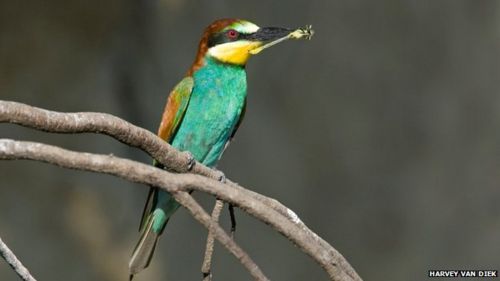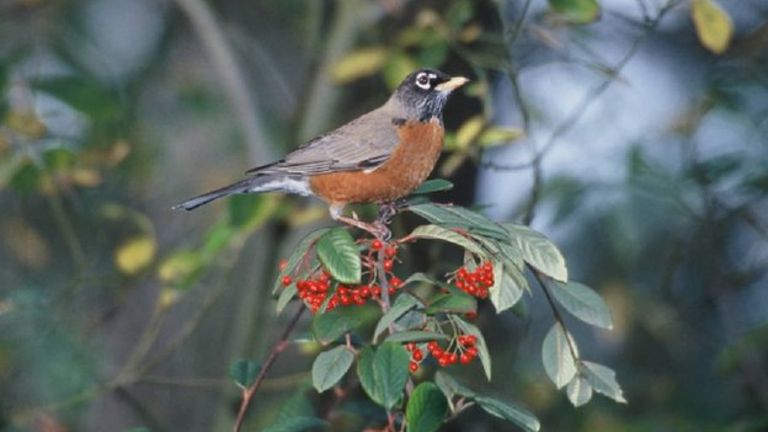Populations of the most common bird species in Europe and the US are being altered by climate change, according to an international study.

Bee-eaters seem to be benefitting from climate change, increasing their population in Europe in recent years
For the first time researchers showed climate to be having a similar, significant impact on bird populations in large, distant areas of the world.
Their study used population-predicting models and three decades of field data, gathered by bird-watching volunteers.
The findings are published in the journal Science.
Led by Durham University scientists, the team developed models that related each species' habitat to long-term climate patterns.
Using annual climate records - from 1980 to 2010 - these models were able to predict where a species had experienced an improvement or a decline in suitable climate.

Climate is remapping habitat for many familiar birds, such as the wren
"We then had this amazing data set collected by thousands of volunteers over decades - where people have gone out and counted birds across different countries in Europe and the United States," explained lead researcher Dr Stephen Willis.
"We can use that to see to what extent our predictions match what people are finding on the ground."
The outlook is different for each species. Increasing temperatures in the UK, for example, allow some species to expand their range and increase their population, while the same temperature patterns have made the UK a less suitable habitat for others.
But the overall trends, this study shows, are strikingly similar in the US and Europe; populations are increasing in species predicted to benefit from climate change and decreasing in those predicted to be negatively affected.
"One important thing is that we're looking at the most common birds," said Dr Willis. "These birds are doing a lot of good in the countryside - eating crop pests and helping our ecosystems work.
"So we need to understand how they'll respond."
Shifting flocks

The American robin has declined in some southern states, but increased further north.
The research shows how the climate is gradually remapping the avian habitat across two continents.
In Europe, for example, birds such as the wren have been increasing in northern areas as winters become milder, but declining in some southern countries. The American robin has declined in some southern states, but increased further north.
"This is really the first time anyone's ever looked at changes in climate across two really extensive parts of the world," said Dr Willis. "So we're getting an idea that [the impacts of] climate change on wildlife are more far-reaching than individual countries."
David Noble from the British Trust for Ornithology, who was also involved in the study, told BBC News that the findings highlighted the value of such extensive data sets generated by volunteers.
"The similarities in results between the two continents, despite very big differences in their landscapes, geographic barriers and patterns of vegetation, are compelling evidence for the climate change effects," he added.
Dr Willis agreed, saying: "This is work carried out by thousands upon thousands of volunteers; it really demonstrates the power of citizen science."
The study was carried out in partnership with the RSPB and United States Geological Survey (USGS).
From BBC News- Science/ Environment
No comments :
Post a Comment